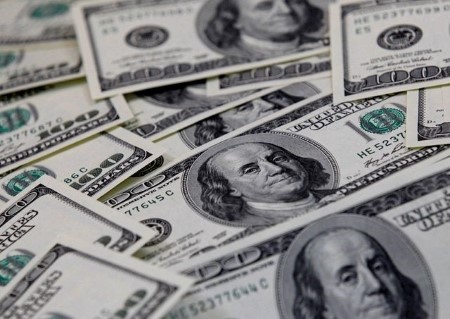




Policy Rate Updates: Double cut finale
 DOWNLOAD
DOWNLOAD

Monthly Economic Update: One for the road
 DOWNLOAD
DOWNLOAD

Inflation Update: Still low, still slow
 DOWNLOAD
DOWNLOAD


US yields continue ascent on Fed rate outlook

NEW YORK, Sept 25 – US Treasury yields were mostly higher on Monday, with the benchmark 10-year Treasury yield adding to three straight weeks of gains on expectations the US Federal Reserve was likely to keep interest rates at higher levels for longer than initially anticipated.
Chicago Fed President Austan Goolsbee said on Monday that inflation remaining entrenched above the central bank’s 2% target remains a bigger risk than tight Fed policy slowing the economy more than needed.
The yield on 10-year Treasury notes was up 10 basis points to 4.542% after climbing to 4.533%, its highest since October 2007.
“What you are seeing over the past couple of months and that was kind of re-emphasized over the last week is that the market is getting used to the economic data and paying attention to the economic data and the thinking the economy can handle itself with rates currently where they are is starting to resonate,” said Jim Barnes, director of fixed income at Bryn Mawr Trust in Berwyn, Pennsylvania.
“The core rationale over the past couple of months has been pretty consistent in that the market continues to position itself for the ‘higher for longer’ type of environment.”
Goldman Sachs last week pushed out its expectations for a Fed rate cut from the second quarter of next year to the fourth quarter of 2024.
Expectations for another 25 basis point hike by the Fed at its November meeting lessened to 21.1%, down from 34.1% a week ago, according to CME’s FedWatch Tool.
The yield on the 30-year Treasury bond was up 13 basis points to 4.656%.
Economic data was light on Monday but investors will get a look at several data points on the housing market this week, along with the final reading of second-quarter gross domestic product and personal consumption expenditures.
A closely watched part of the US Treasury yield curve measuring the gap between yields on two- and 10-year Treasury notes, seen as an indicator of economic expectations, was at a negative 59.1 basis points, its steepest in about four months.
“Essentially, the yield curve is going to start pricing in a recession, that is usually what happens when the yield curve steepens as much as it does,” said Tom di Galoma, co-head of global rates trading at BTIG in New York.
“You had the big inversion move, we’ve been inverted for a good 15 to 18 months, and now the curve is steepening out, and that is a bit because the long-end has just kind of given way to higher rates.”
More supply will come to the market this week when the Treasury auctions off USD 48 billion in two-year notes on Tuesday, USD 49 billion in five-year notes on Wednesday, and USD 37 billion in seven-year notes on Thursday.
The two-year US Treasury yield, which typically moves in step with interest rate expectations, edged up 1 basis point to 5.131%.
The breakeven rate on five-year US Treasury Inflation-Protected Securities (TIPS) was last at 2.317%, after closing at 2.316% on Friday, its lowest close in about a week.
The 10-year TIPS breakeven rate was last at 2.371%, indicating the market sees inflation averaging 2.4% a year for the next decade.
(Reporting by Chuck Mikolajczak; Editing by Alison Williams and Richard Chang)
This article originally appeared on reuters.com





 By Reuters
By Reuters